
A gene as a stretch of DNA on a chromosome. Alleles as versions (sequence variants) of a gene.
- Subject:
- Biology
- Genetics
- Life Science
- Material Type:
- Lesson
- Provider:
- Khan Academy
- Provider Set:
- Khan Academy
- Author:
- Sal Khan
- Date Added:
- 12/10/2014

A gene as a stretch of DNA on a chromosome. Alleles as versions (sequence variants) of a gene.

Biology is designed for multi-semester biology courses for science majors. It is grounded on an evolutionary basis and includes exciting features that highlight careers in the biological sciences and everyday applications of the concepts at hand. To meet the needs of today’s instructors and students, some content has been strategically condensed while maintaining the overall scope and coverage of traditional texts for this course. Instructors can customize the book, adapting it to the approach that works best in their classroom. Biology also includes an innovative art program that incorporates critical thinking and clicker questions to help students understand—and apply—key concepts.
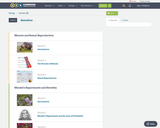

By the end of this section, you will be able to:List the steps in eukaryotic transcriptionDiscuss the role of RNA polymerases in transcriptionCompare and contrast the three RNA polymerasesExplain the significance of transcription factors


By the end of this section, you will be able to:List the different steps in prokaryotic transcriptionDiscuss the role of promoters in prokaryotic transcriptionDescribe how and when transcription is terminated

By the end of this section, you will be able to:Describe the different steps in RNA processingUnderstand the significance of exons, introns, and splicingExplain how tRNAs and rRNAs are processed
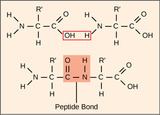
By the end of this section, you will be able to:Describe the different steps in protein synthesisDiscuss the role of ribosomes in protein synthesis
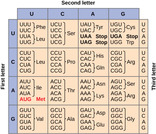
By the end of this section, you will be able to:Explain the “central dogma” of protein synthesisDescribe the genetic code and how the nucleotide sequence prescribes the amino acid and the protein sequence
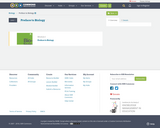

Biology is designed for multi-semester biology courses for science majors. It is grounded on an evolutionary basis and includes exciting features that highlight careers in the biological sciences and everyday applications of the concepts at hand. To meet the needs of today’s instructors and students, some content has been strategically condensed while maintaining the overall scope and coverage of traditional texts for this course. Instructors can customize the book, adapting it to the approach that works best in their classroom. Biology also includes an innovative art program that incorporates critical thinking and clicker questions to help students understand—and apply—key concepts.

Esta infografía da una visión general de la clonación. Explica la clonación como la creación de copias idénticas de organismos, células, virus o moléculas de ADN, destacando sus aplicaciones en investigación genética, producción de medicamentos, desarrollo de vacunas y terapia génica. Menciona hitos históricos y pioneros en el campo, como Robert Briggs, John B., así como Ian Wilmut con Keith Campbell. También describe el proceso de clonación genética para la creación de un ADN recombinante, en cinco pasos y presenta ventajas y desventajas, mencionando aspectos éticos y riesgos. Los autores son QFB Patricia Rosales-Flores, MC. Diana Lizzet Murrieta.León y Dra. Aracely López-Monteon

Genetic engineering is responsible for the so-called "second green revolution." Genes that encode herbicide resistance, insect resistance, drought tolerance, frost tolerance, and other traits have been added to many plants of commercial importance. In 2003, 167 million acres of farmland worldwide were planted in genetically modified (GM) crops equal to one fourth of total land under cultivation. The most widely planted GM crops are soybeans, corn, cotton, canola, and papaya. Two important transgenes have been widely introduced into crop plants. The Bt gene, from Bacillus thuringiensis, produces a toxin that protects against caterpillars, reducing applications of insecticides and increasing yields. The glyphosate resistance gene protects food plants against the broad-spectrum herbicide Roundup, which efficiently kills invasive weeds in the field. The major advantages of the "Roundup Ready®" system include better weed control, reduction of crop injury, higher yield, and lower environmental impact than traditional herbicide systems. Most Americans would probably be surprised to learn that more than 60% of fresh vegetables and processed foods sold in supermarkets today are genetically modified by gene transfer. In 2004, approximately 85% of soy and 45% of corn grown in the U.S. were grown from Roundup Ready® seed.
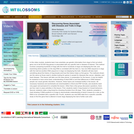
In this video module, students learn how scientists use genetic information from dogs to find out which gene (out of all 20,000 dog genes) is associated with any specific trait or disease of interest. This method involves comparing hundreds of dogs with the trait to hundreds of dogs not displaying the trait, and examining which position on the dog DNA is correlated with the trait (i.e. has one DNA sequence in dogs with the trait but another DNA sequence in dogs not displaying the trait). Students will also learn something about the history of dog breeds and how this history helps us find genes.

This resource is a video abstract of a research paper created by Research Square on behalf of its authors. It provides a synopsis that's easy to understand, and can be used to introduce the topics it covers to students, researchers, and the general public. The video's transcript is also provided in full, with a portion provided below for preview:
"Dimethyl sulfide (DMS) is a gas produced by bacteria and algae that gives the ocean its distinctive scent. It also plays an important role in cloud formation, leading scientists to think its production may be instrumental in regulating climate change. But sea ice melt in the polar oceans under global warming has led to a reduction in DMS production, which may further intensify climate warming. To gain a better understanding of how bacteria contribute to DMS production, scientists recently investigated the distribution of bacterial genes involved in DMS cycling in seawater samples collected from around the world. They found evidence that intense DMS cycling facilitated predominantly by Alphaproteobacteria and Gammaproteobacteria occurs in the Arctic and Antarctic oceans, with high involvement of the enzymes DMSP demethylase, DMSP lyases, and trimethylamine monooxygenase..."
The rest of the transcript, along with a link to the research itself, is available on the resource itself.

In this class, students engage in independent research projects to probe various aspects of the physiology of the bacterium Pseudomonas aeruginosa PA14, an opportunistic pathogen isolated from the lungs of cystic fibrosis patients. Students use molecular genetics to examine survival in stationary phase, antibiotic resistance, phase variation, toxin production, and secondary metabolite production.
Projects aim to discover the molecular basis for these processes using both classical and cutting-edge techniques. These include plasmid manipulation, genetic complementation, mutagenesis, PCR, DNA sequencing, enzyme assays, and gene expression studies. Instruction and practice in written and oral communication are also emphasized.
WARNING NOTICE
The experiments described in these materials are potentially hazardous and require a high level of safety training, special facilities and equipment, and supervision by appropriate individuals. You bear the sole responsibility, liability, and risk for the implementation of such safety procedures and measures. MIT shall have no responsibility, liability, or risk for the content or implementation of any of the material presented.
Legal Notice

Since the discovery of the structure of the DNA double helix in 1953 by Watson and Crick, the information on detailed molecular structures of DNA and RNA, namely, the foundation of genetic material, has expanded rapidly. This discovery is the beginning of the “Big Bang” of molecular biology and biotechnology. In this seminar, students discuss, from a historical perspective and current developments, the importance of pursuing the detailed structural basis of genetic materials.

Leaders in the field of biological diversity present an overview of emergent issues in biodiversity, from the surrounding flora and fauna to the genes deep within us. (117 minutes)
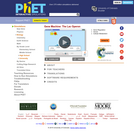
Build a gene network! The lac operon is a set of genes which are responsible for the metabolism of lactose in some bacterial cells. Explore the effects of mutations within the lac operon by adding or removing genes from the DNA.
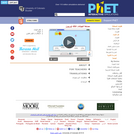
Build a gene network! The lac operon is a set of genes which are responsible for the metabolism of lactose in some bacterial cells. Explore the effects of mutations within the lac operon by adding or removing genes from the DNA.